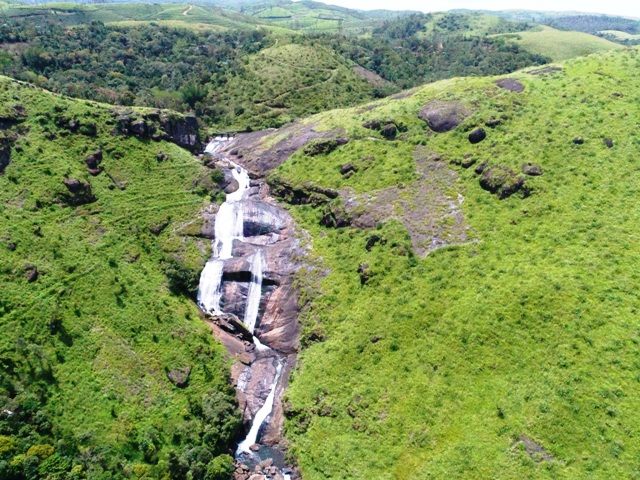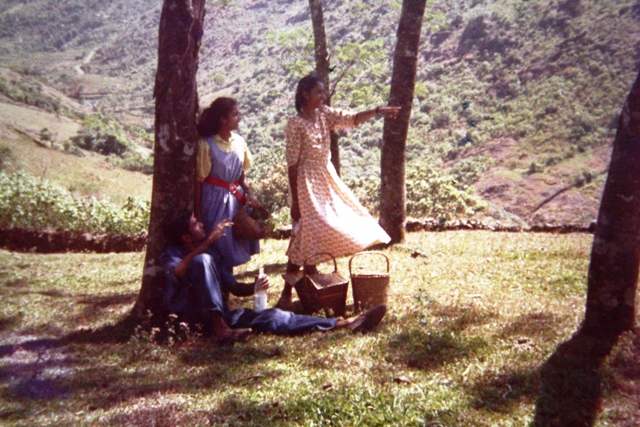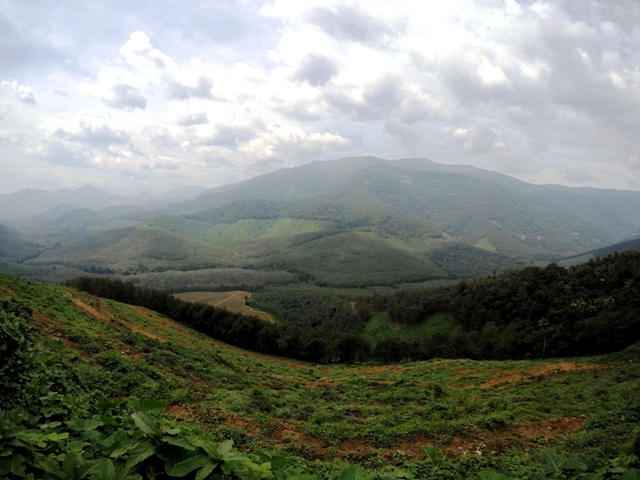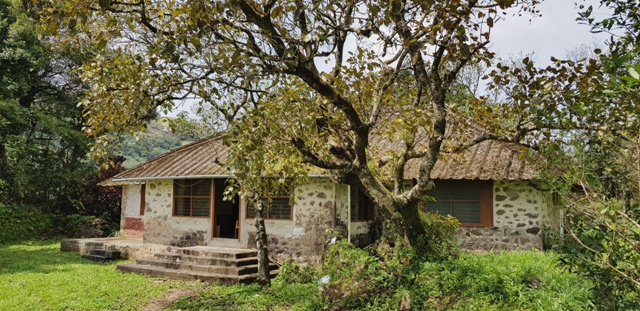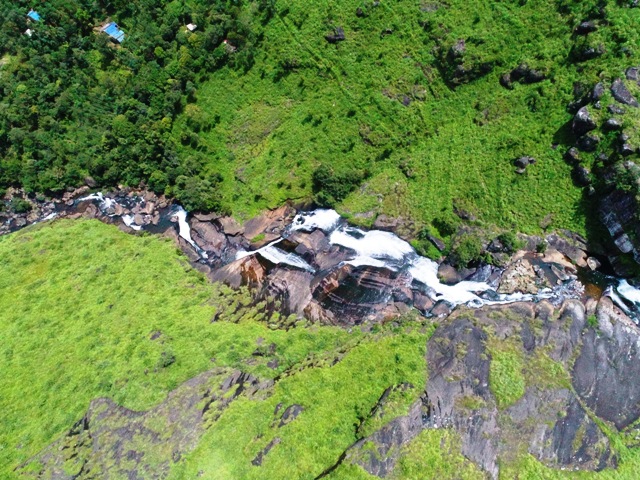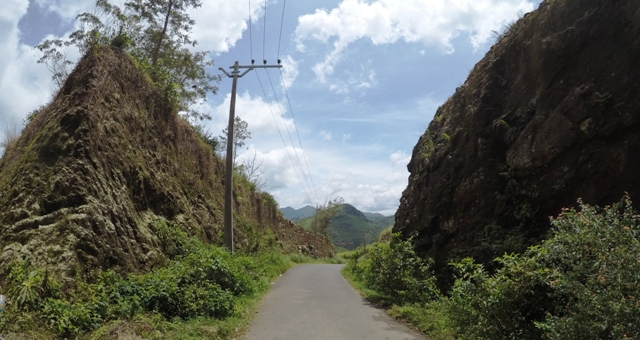Belgian monk Francis Acharya decided to come to India after he met Gandhi in London. So impressed was he by the Mahatma’s espousal of the tenets of Hinduism that he wanted to work for the ‘encounter between Hinduism and Christianity.’ After several unsuccessful applications for visa he finally approached Vijayalakshmi Pandit who was the Indian High Commissioner in England at that time. The visa was finally granted after Jawaharlal Nehru sought a personal guarantee from Acharya that he wouldn’t proselytise. Acharya then travelled across the country before setting up his koinonia along the lines of a Hindu ashram.
He chose Vagamon in Kerala snuggled amid the lushly verdant hills of the Western Ghats, with generous land donations and support of locals he started the Kurisumala Ashram in 1958. Here he found the sylvan quietude he sought, the sparse population of largely tribal people welcoming and the hills perfect for growing grass. The commune was self-reliant when it came to food and the well-fed cows supplied milk in excess. The milk is what I remember of the Acharya who passed away in 2002.
Vagamon is next door to my hometown Palai. The arcadian settings made it synonymous with picnics for us as well as with other middleclass families in town. The 40 km travel was initially by bus and then in an Ambassador our first car. The ride up the 1200 metre altitude was our earliest brush with hairpin bends and that growing thrum in the ears – swallowing it down with exaggerated gulping movements used to be cause of much merriment. Not so much was one or two of the sisters – there are four – throwing up and sitting back enervated, stinking the car. During our bussing days folks would follow in a later bus with cooked food; our luggage was mostly mats and biscuits to hold on to till they arrived. Hiding when they reached and watching their faces take on different alarmed contortions gave us immense joy. An old Kodak film camera slung around my neck more a happiness prop. The old, bulky, cranky contraption with an advance lever that always got stuck bruising my thumb was carried around with the prideful nonchalance like a Mjolnir.
The rolling hillsides were open to all then circa 1990. The brooks gurgled cool mountain water. Low lying stone walls marked boundaries watched over by lazily grazing Jersey cattle their enormous udders coming in the way of their mobility. We would eat our chapathis and chicken curry and cut the cake if it was a birthday and repair to pine tree boles to read while folks dozed. I would wander into the deeper necks imagining a tiger that would leap at me, I would successfully capture it on film before ducking into a cave and become famous overnight. The closest I came to wild animals was a couple having frantic sex on a rock abutting a small waterfall. Their clothes lay cattywampus around the rock dark and glistening with moisture, her open legs dangled in the air, while a pair of hirsute buttocks pegged away in frenzy. The image is still more vivid in my memory than any of the home videos forwarded in scores over WhatsApp everyday.
As evening fell my dad would lead us like Captain von Trapp into the hallowed premises of the Ashram. We would be under strict orders to just breathe. Save for the infrequent mooing of a newborn calf the rest of the livestock seemed to have latched on to the prevailing silence. We the kids would kneel on the gruff coir mat of the chapel while our parents sat on wooden benches placed near the wall. The kneeling would continue till there was a clear sign to disperse – usually a muffled clearing of the throat from dad or mom touching the shoulder of one of the children on her way out. Probably taking a cue from this torture, however seemingly benevolent, one of the monks who would be around would invite us to the cosy little dining room. There we would be served tall glass tumblers of the milkiest milk I have ever drunk sweetened to perfection. I remember mother remarking once that it was just like Carnation, a brand of condensed milk, we would get in Nigeria. We would slurp out leaving not a tittynope behind.
On a couple of occasions Francis Acharya himself joined us. I remember staring at a simple but burnished walking stick, flowing white beard and tinkling eyes, the perfect Santa. He was happy, smiled all the time and nodded interestedly when dad gave our names and spoke about our academic interests. He would ask us how the holidays were going and offer us another round of milk. We kids were taught to vehemently refuse the second helping of anything but I always managed to inveigle a second glass by subtly infusing my staunch refusal with self-doubt. Being a furious stutterer during my teen years guess the doubting part came easy.
After many years I recently visited the Ashram with my parents. A lot of things had changed. In place of low stone walls to keep the animals in there were barbed wires to keep people out. We were stopped at the gates by a churlish security guard who refused us passage till somebody intervened. The dairy farm was outsourced as a business proper. In addition to the ‘silence’ signboards there were others that said ‘please switch off your mobile phones.’ Francis Acharya himself was now a big, framed photograph, interred in a new chapel next to a small flower and fruit garden. More curious about his life and work now – and given up on the prospect of being offered a glass of milk – I looked around the prayer hall where I used to kneel as a kid with my sisters. There were telling signs of the founder’s desire to work where Hinduism and Christianity met. A well-thumbed Bhagvad Gita was placed right next to the Bible and many monks wore saffron-coloured robes even. One monk told me that while revenue from the farm supported the Ashram, it continued to be a place of quiet, retreat and debate on faith syncretism. Yes, the guard might have been a bit unruly but he was under a lot of pressure as the secluded hillsides had become a preferred venue for compotation parties. Sometime fornication too, I thought.
We were awash with hiraeth outside a stone cottage with chimney where we would prance about from room to room years ago and marvel at the stone beds with miniature hearths beneath. Each bed and room we assigned to each of us, including the different chores that took to running it. Though it wore a look of desolation and neglect, the sturdy stone walls still stood holding intact the memories. As I made my way towards it, the same security guard came running brandishing his mobile phone threatening to call back up. I retreated.
We traced some of the famous ‘mottakkunnu’ of Vagamon, small pilgarlic mountains, looking for a place to lunch. The hills were largely lush but bald and burnt patches were growing. Tea still occupied large tracts of the undulating slopes. In 2012 the UNESCO had declared the 1600 km long Western Ghats range a World Heritage Site by dint of being one of the ‘hottest hotspot of biodiversity in the world.’ Of the 39 designated sites along the range that traverses the states of Gujarat, Maharashtra, Karnataka, Tamil Nadu, Goa and Kerala, 20 are in Kerala alone. But road construction and mining had cleared out huge tracts of the forests – older than the forests of the Himalayas – and carved out mountains. What looked like thick interrobangs from a distance now looked like faint brackets.
Nooks that were out of bound earlier were now accessible including sights; the last stretch of road which was not motorable passed off as treks. Palozhukumpara, a waterfall, which meant ‘rock on which milk flows’ was one such we hadn’t even heard of before. While hyperbole is the norm when it comes to tourism nomenclature this time it did perfect justice. In the aerial photographs that I took of the waterfalls it looked like a white sari that might have slipped completely off Mandakini or Zeenat Aman while performing one of their famous onscreen ablutions.
The usually taciturn locals had become bloviates, eager to sell you a piece of their land. This one talked to us with his phone in one ear all the time that it was difficult to discern which end he was tending to. The pattayam is all intact, he assured, trying to undermine our fear. Pattayam or original ownership document is hot debate in the Ghats as once people used to encroach into forest land with impunity. A single tranche payment, in cash, would fetch us substantial discounts in the asking rates, the local cum agent assured us. My mother, as usual, wanted me to buy up the whole area. In case I didn’t have the money she would lend me. It didn’t matter that I didn’t want it.
As always a cool breeze began to blow late afternoon and the sun disappeared. A hazy blue light enveloped the region as we began our descent. We spoke about the prominent family from our hometown which was losing most of their tea plantations to mortgage proceedings by the bank; the family patriarch was one of the earliest settlers of Vagamon. We passed by road and mountainsides littered by tourists and dating couples from nearby colleges. Flyweight motorcycles zipped by with the pillion riding woman angled like a human cannonball. One or two of the buses that passed by huffing and puffing, billowing smoke, we recognised as ones we used to take years ago. Even though they were painted garish colours in corrugated layers they sported the same names. Some window-seated kids could be seen craning their necks and pointing out the distant hills to each other.
The picnic continued.


